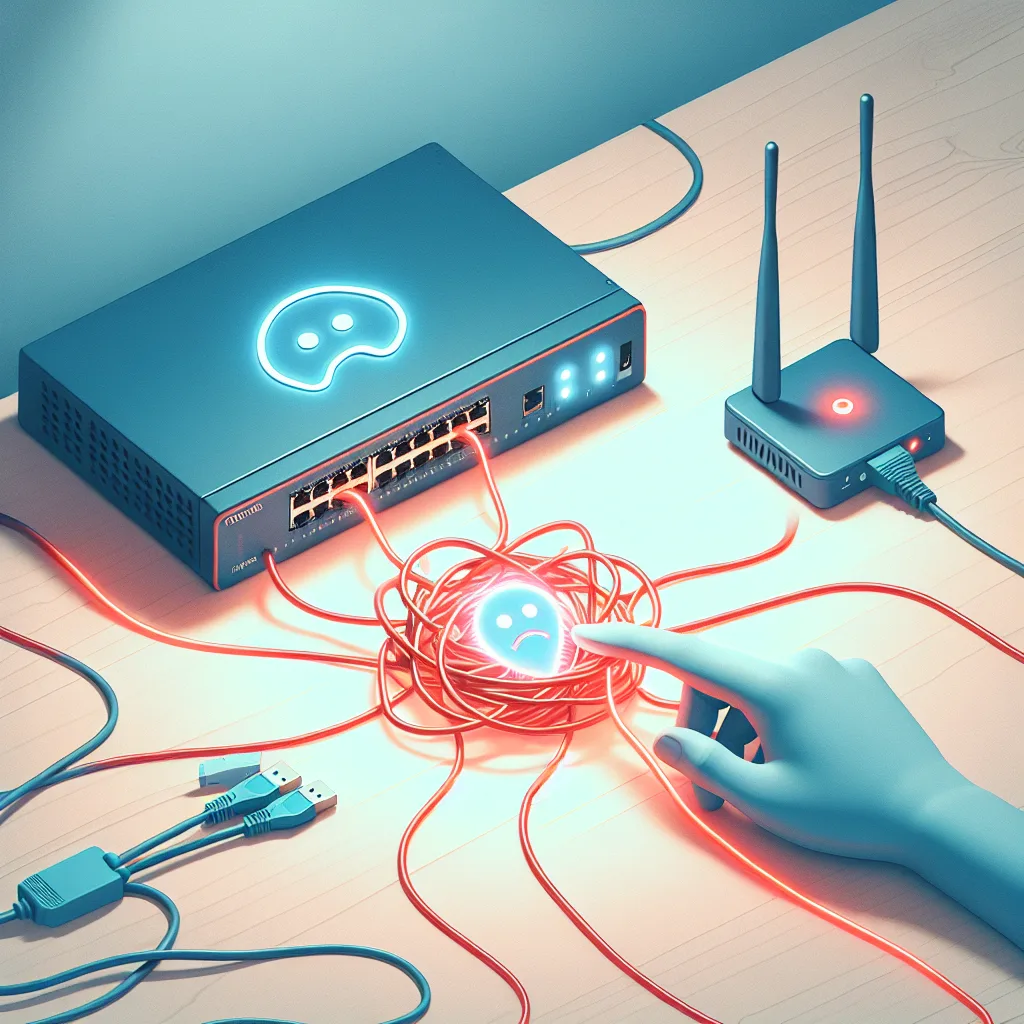If connecting your router makes your switch’s admin page disappear, you’re not alone. Here’s the simple MikroTik WebFig fix you’ve been searching for.
So, you got a new MikroTik switch. You plug it in, connect your computer directly, and everything works beautifully. You can access the configuration page, you’re clicking around, and feeling pretty good about your new gear. Then, you do the one thing you’re supposed to do: you connect it to your main router to get it on the network. And just like that, it’s gone. You can’t access the WebFig admin page anymore. If this sounds familiar, don’t worry—you’ve just stumbled upon a classic networking puzzle, and this simple MikroTik WebFig fix will get you sorted out in no time.
It’s a frustrating experience, but what’s happening is actually pretty straightforward. It all comes down to a classic case of mistaken identity—for your network devices, that is.
What’s Really Happening with Your Switch?
Most MikroTik switches running SwitchOS, like the popular CSS610 series, come out of the box with a default, static IP address: 192.168.88.1. This is so you can easily connect to it for the initial setup.
Your router, however, has a job to do. Its DHCP server is responsible for handing out IP addresses to every device that connects to it, ensuring there are no duplicates. When you plug your switch into the router, a conflict happens:
- The IP Address Conflict: Your router might also be using a
192.168.x.1address, causing a direct traffic jam. - The DHCP Takeover: The switch, by default, is often set to “DHCP with fallback.” This means it first tries to get an IP from your router. If it succeeds, it gets a new IP address that you don’t know, and the old
192.168.88.1address stops working.
Either way, the address you were using to talk to your switch is suddenly gone, and you’re locked out. The solution is to step in and manually assign your switch a permanent, predictable address.
The Step-by-Step MikroTik WebFig Fix
Ready to fix it for good? We just need to isolate the switch, give it a new address, and tell it to stick with it.
Step 1: Isolate Your Switch
First things first, unplug the Ethernet cable that connects your switch to your router. For now, the only connection should be between your computer and the switch. This takes the router’s DHCP server out of the equation so we can talk to the switch directly again.
Step 2: Set a Temporary Static IP on Your Computer
Since the switch is on the 192.168.88.x network, your computer needs to be on it, too. You’ll need to temporarily change your computer’s network settings.
* On Windows: Go to Settings > Network & Internet > Ethernet > Change adapter options. Right-click your Ethernet adapter, choose Properties, select “Internet Protocol Version 4 (TCP/IPv4),” and click Properties.
* On Mac: Go to System Settings > Network > Ethernet > Details… > TCP/IP.
Choose “Use the following IP address” and enter:
* IP Address: 192.168.88.5 (anything other than .1 will work)
* Subnet Mask: 255.255.255.0
Leave the gateway and DNS fields blank for now. Click OK/Apply.
Step 3: Access WebFig and Change the IP Settings
Open your web browser and navigate to `http://192.168.88.1`. Voila! The WebFig login page should appear.
Once you’re logged in, find the “System” tab. This is where the magic happens. Here’s what you need to change:
- Address Acquisition: Change this from
DHCP with FallbacktoStatic. - IP Address: This is the most important part. You need to assign an address that fits your main network. For example, if your router’s IP is
192.168.1.1, you could set your switch’s IP to192.168.1.2. Crucially, make sure this IP is outside your router’s DHCP range to avoid future conflicts. (You can find your router’s DHCP range in its admin settings). - Gateway: Set this to your router’s IP address (e.g.,
192.168.1.1).
Click “Apply All” to save your changes. The switch will now have its new, permanent home on your network.
Finalizing Your MikroTik Switch Setup
Your switch is now configured, but your computer is still stuck on the old network. Let’s finish the job.
- Reset Your Computer’s IP: Go back to your computer’s TCP/IPv4 settings and change it back to “Obtain an IP address automatically.”
- Reconnect Everything: Plug the Ethernet cable from your router back into your switch. Your computer should also be connected to the switch.
- Test It Out: Open your browser and navigate to the new static IP address you just assigned (e.g., `http://192.168.1.2`). The WebFig login page should load perfectly.
You’ve done it! You’ve resolved one of the most common setup hurdles for managed switches. It’s a rite of passage for anyone building a more robust home network. For a deeper dive into the settings, the official MikroTik SwitchOS manual is an excellent resource. And if you’re curious about the difference between IP address types, you can find great explainers on sites like How-To Geek.
Welcome to the wonderful world of MikroTik!
